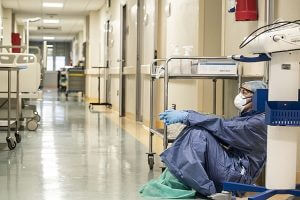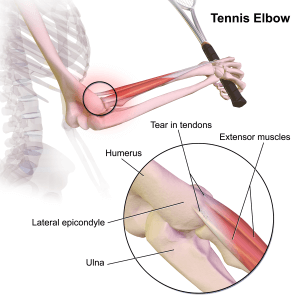Overview
Endometriosis is a disease affecting women from all backgrounds. It is a chronic condition in which there is an outgrowth of the endometrium-like tissue in organs outside the uterus. The organs of the body most commonly involved are the fallopian tubes (oviducts), ovaries (female gonads), and the peritoneum (the membrane lining covering the abdomen and pelvic cavities). All these tissues combined are termed endometriosis and they work just like the uterine tissue. They grow with the normal menstrual cycle, break down, and bleed regularly during menstruation.
According to some recent meta-analysis, Asian women are most prone to get endometriosis, with an average of 50 per cent more chance than white women. Black women, on the other hand, are 50 per cent less likely to become affected by this disease than white women. Globally, endometriosis affects 10% of premenopausal (childbearing) women and girls. This sums up to approximately 176 million women in the world. In Australia, nearly one out of nine women (more than 11%) are affected by endometriosis. Of the affected, roughly 80% of the females are between fifteen and forty-four years of age.
Signs and Symptoms
Endometriosis can present with a variety of signs and symptoms. The stray tissue can grow anywhere in the abdomen and pelvis thus causing many different symptoms. The most common signs and symptoms associated with this disease are:
- Painful periods i.e., excessive menstrual cramps and pain especially in the abdomen and lower back (pelvic pain)
- Dysmenorrhea
- Pain during or after sexual intercourse
- Abnormal menstrual blood flow; heavier or lighter than usual
- Painful bowel movement; associated with constipation or diarrhea during menstrual periods
- Painful urination especially during menstruation
- Nausea and vomiting
- Other gastrointestinal problems; similar to IBS (irritable bowel syndrome) which precipitates as altered and painful bowel movements accompanied by diarrhea or constipation
It is important to note, however, that the severity of the disease cannot be determined by the severity of pain. Some women with severe endometriosis feel next to no pain or discomfort while others may experience severe pain and discomfort.
Risk Factors
The exact causes of endometriosis are unclear, but certain factors seem to increase the risk of a female becoming affected. Various risk factors for endometriosis include:
- Family history; i.e., if a woman’s first-degree relatives are affected
- Early-onset of menarche; starting periods earlier than 11 years of age
- Going through menopause at an older age
- Shorter and more frequent menstruation cycles – e.g., less than 27 days
- Having a higher level of hormones, namely estrogen, in your body
- Any medical condition that prevents the normal outflow of menstrual blood
- Women with an anatomically abnormal uterus.
Consequences
Excess of anything can turn out badly and unfortunately, this condition can sometimes cause disturbing problems like variable menstruation cycles, scar formation, ovarian cyst (fluid-filled cavity in the ovaries). Women with long-term untreated endometriosis might have abnormal blood cholesterol levels and increased heart diseases. Although there is not enough evidence about endometriosis leading to cancer, some women with endometriosis did have relatively higher occurrences of ovarian cancer and non-Hodgkin’s Lymphoma (cancer of white blood cells).
One very disturbing consequence of endometriosis is infertility i.e., difficulty in becoming pregnant. This can be very distressing for many people, not just women. Prompt diagnosis and treatment can, fortunately, increase the chances of getting pregnant.
Diagnosis
Getting a certain diagnosis for endometriosis is often difficult and for many women, it’s a relief. The usual diagnosis begins with the patient’s medical history and physical examination which includes a pelvic exam. To make certain diagnoses, physicians need to do a laparoscopy followed by a tissue biopsy. A laparoscope is a thin tube with a camera at the end to visualize the internal organs of the body. It is used by inserting it into the abdomen near the umbilicus through a small incision and then visualising the extra-uterine growths of endometrial-like tissue anywhere in the abdomen or pelvis. The following procedure, tissue biopsy, includes extracting a piece of the suspicious tissue and examining it using microscopy and other lab techniques.
Moreover, other imaging techniques are also used to determine a diagnosis for endometriosis. These procedures include:
- Ultrasound
- CT scan
- MRI scan
After examining the tissue, the disease is classified into one of the four stages of endometriosis defined by the American Society of Reproductive Medicine. The stage is defined by the location, amount, depth, and size of the endometrial tissue. The stages are classified as:
- Stage I: Minimal
- Stage II: Mild
- Stage III: Moderate
- Stage IV: Severe
Unfortunately, the diagnosis of Endometriosis is many a time delayed, with an average of seven years between the onset of symptoms and getting a diagnosis.
Treatments
Despite advancements in technology, there is currently no cure for endometriosis. Treatment usually involves medical and/or surgical procedures. The treatment approach usually opted depends on the severity of the disease along with the associated signs and symptoms. Another important factor determining the type of treatment is whether you are hoping to become pregnant or not.
Medicinal therapy includes the administration of over-the-counter available painkillers e.g., no-steroidal anti-inflammatory drugs (NSAIDs) ibuprofen (Nurofen), etc. Use of hormonal therapy is also utilised as these supplemental hormones are sometimes helpful in reducing or eliminating the pain of endometriosis. These hormonal therapies include:
- Hormonal Contraceptives; birth control pills
- Gonadotropin-releasing hormone agonist and antagonist; these drugs down-regulate estrogen produced
- Aromatase Inhibitors
- Oral progesterone
Conservative Surgery is also an option for treating endometriosis, especially if a woman is trying to conceive. In a conservative surgery, the organs like the uterus, ovaries, and fallopian tubes are preserved and the extra endometrial tissue is removed. It is also used for severe painful types of endometriosis.
Prevention
Unfortunately, you can’t prevent endometriosis but can reduce the chances of developing it by different methods. One of the most common methods used is to lower the levels of estrogen in your body. Estrogen causes growth and thickening of the endometrial lining in the uterus and thus can increase the chances of endometriosis. To achieve this, you can:
- Consult your doctor about birth control methods such as pills with lower estrogen levels
- Exercising regularly; despite being beneficial for almost every body tissue, exercise can help lower body fat thus decreasing the circulating estrogen levels (in the blood)
- Avoiding alcohol
- Avoid drinks with a large amount of caffeine – as more than one caffeine drink has shown to increase estrogen levels
You should consult your doctor regularly especially if there is an unexplained pain or discomfort in your abdomen or pelvis associated with your menstrual cycle as it can save you from the debilitating effects of endometriosis.
- Endometriosis. Office on Women’s Health. https://www.womenshealth.gov/publications/our-publications/fact-sheet/endometriosis.html.
- Schenken RS. Endometriosis: Pathogenesis, clinical features, and diagnosis. https://www.uptodate.com/contents/search.
- Frequently asked questions. Gynecological problems FAQ013. Endometriosis. American College of Obstetricians and Gynecologists. https://www.acog.org/~/media/For%20Patients/faq013.pdf?dmc=1&ts=20130305T1348596508.
- AskMayoExpert. Endometriosis. Rochester, Minn.: Mayo Foundation for Medical Education and Research; 2018.
- Smith RP. Endometriosis. In: Netter’s Obstetrics and Gynecology. 3rd ed. Philadelphia, Pa.: Elsevier; 2018. https://www.clinicalkey.com. Jan. 13, 2019.
- Schenken RS. Endometriosis: Treatment of pelvic pain. https://www.uptodate.com/contents/search.
- Lebovic DI. Endometriosis: Surgical management of pelvic pain. https://www.uptodate.com/contents/search. Accessed Jan. 13, 2019.
- Strauss JF, et al., eds. Endometriosis. In: Yen and Jaffe’s Reproductive Endocrinology. 8th ed. Philadelphia, Pa.: Elsevier; 2019. https://www.clinicalkey.com.
- Lobo RA, et al. Endometriosis etiology, pathology, diagnosis, management. In: Comprehensive Gynecology. 7th ed. Philadelphia, Pa.: Elsevier; 2017. https://www.clinicalkey.com.
- Laughlin-Tommaso SK, et al. Cardiovascular and metabolic morbidity after hysterectomy with ovarian conservation: A cohort study. Menopause.
- Burnett TL (expert opinion). Mayo Clinic, Rochester,
- Warner KJ. Allscripts EPSi. Mayo Clinic, Rochester,
- Mira TAA, et al. Systematic review and meta-analysis of complementary treatments for women with symptomatic endometriosis. International Journal of Gynecology and Obstetrics
- Dunselman GA, Vermeulen N, Becker C, Calhaz-Jorge C, D’Hooghe T, De Bie B et al. ESHRE guidelines: management of women with endometriosis. Hum Reprod. 2014;29(3):400–12.
- Australian Government Department of Health: What are we doing about endometriosis; https://www.health.gov.au/health-topics/chronic-conditions/what-were-doing-about-chronic-conditions/what-were-doing-about-endometriosis
The content shared on the Health Literacy Hub website is provided for informational purposes only and it is not intended to replace advice, diagnosis, or treatment offered by qualified medical professionals in your State or Country. Readers are encouraged to confirm the information provided with other sources and to seek the advice of a qualified medical practitioner with any question they may have regarding their health. The Health Literacy Hub is not liable for any direct or indirect consequence arising from the application of the material provided.



